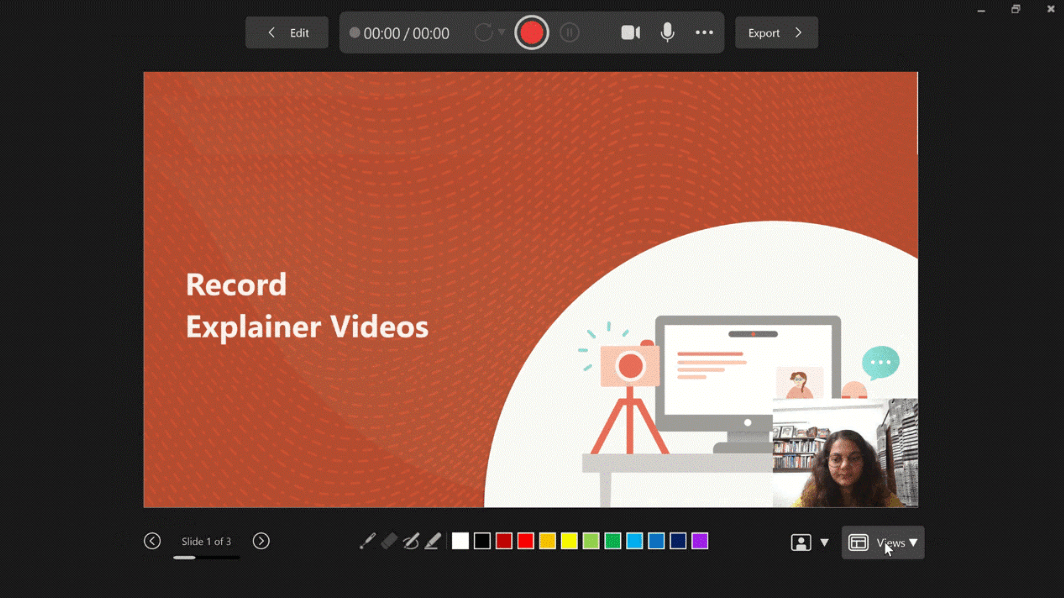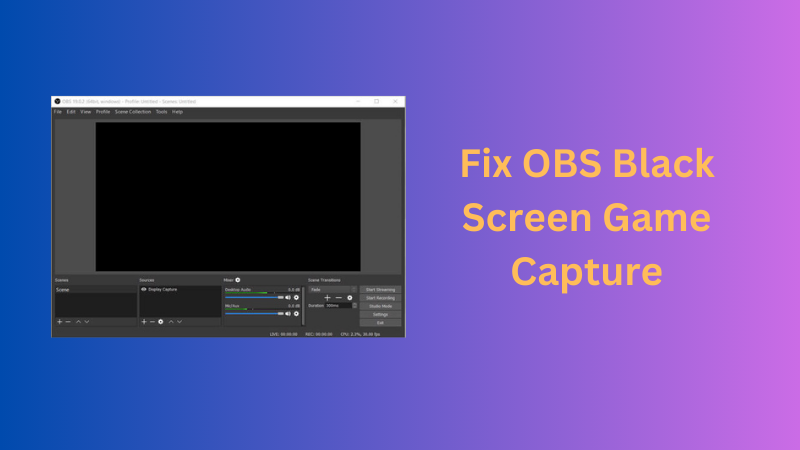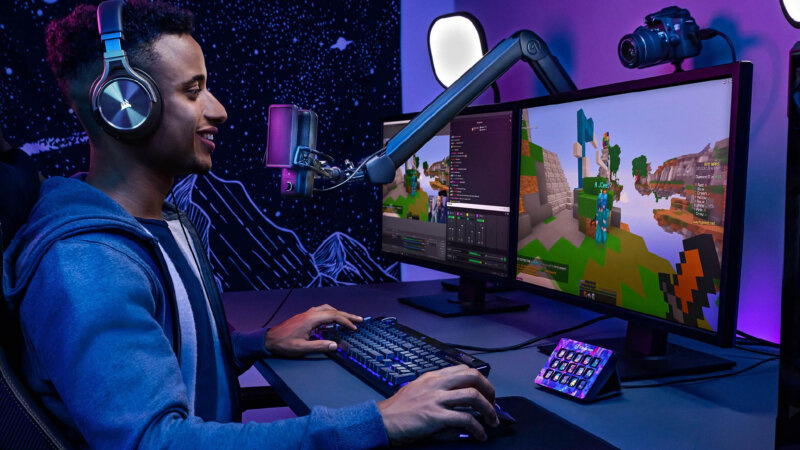How to Record a PowerPoint Presentation 2025?

In this article, we'll show you how to record a PowerPoint presentation and share tips for creating a clear, professional video. Whether you're a beginner or experienced, this guide gives you the steps and tools to record high-quality PowerPoint presentations efficiently.
Part 1: How to Record your Screen in PowerPoint with Audio and Video for Free?
Step 1: Open PowerPoint and go to the slide where you want the recording.
Step 2: Click Insert → Screen Recording on the ribbon to start screen recording.
Step 3: Drag to select the screen area to capture (or press Win + Shift + A).
Step 4: Make sure Audio and Record Pointer toggles are on if you want sound and mouse movements recorded.
Step 5: Click Record (or Win + Shift + R) and perform your demo.
Step 6: Move to the top center to reveal the dock and click Stop (or Win + Shift + Q).
Step 7: The recording appears on your slide. Right-click it, select Save Media As, and choose MP4 to save the video.
Part 2: How to Video Record Myself Presenting a PowerPoint?
Here is how to record yourself on PowerPoint easily. Follow these steps to record a PowerPoint presentation with OBS Studio.
Step 1: Open PowerPoint and start your presentation.
Step 2: Launch OBS Studio, click the + in the Sources panel, and add Display Capture to capture your slides.

Step 3: Add Video Capture Device as another source for your webcam. Adjust its size and position over the slides if needed.

Step 4: Click Start Recording in OBS and present your slides as usual.

Step 5: After finishing, click Stop Recording. Your video will be saved in the location specified in OBS output settings.

For better clarity and tracking while presenting, using a webcam like the OBSBOT Tiny 2 ensures sharp video, AI auto-framing, and smooth movement if you move around during the recording.
Part 3: Tips for Making Better PowerPoint Presentation Videos
Now that you know how to record a PowerPoint presentation, the next step is making your video clear, engaging, and easy to follow. These tips focus on slide design and recording quality.
Video clarity is crucial for a professional-looking PowerPoint recording. Even great slides can appear unprofessional if your on-camera image is blurry. A high-resolution webcam like the OBSBOT Tiny 2 4K Webcam ensures sharp, consistent video. Its features that improve quality include:
- 4K resolution for sharper video and cleaner details
- AI auto-framing keeps you centered while presenting
- Gesture control for hands-free camera adjustments
- Dual microphones with noise reduction for clearer voice recording
In addition to video clarity, keep the following tips in mind:
- Keep slides simple and consistent. Use Slide Master to maintain the same fonts, colors, and layout throughout the presentation.
- Reduce on-screen text. Focus on key points and explain details verbally instead of reading from the slides.
- Use high-contrast colors. Light text on a dark background improves readability in recorded videos.
- Avoid distracting animations and transitions. Simple transitions look cleaner and more professional in screen recordings.
- Use high-quality visuals. Images and graphics should remain sharp when exported as video.
- Control your pacing. Aim for about one slide per minute to keep viewers engaged.
- Do a short test recording. Check audio, video clarity, and slide readability before recording the full presentation.
Part 4: FAQs about How to Record a PowerPoint Presentation
1. Can You Screen Record a PowerPoint Presentation?
Yes. You can screen record a PowerPoint presentation using PowerPoint’s built-in Record Slide Show feature or third-party tools like OBS Studio. PowerPoint works well for simple narration, while screen recorders offer more control over layout and webcam placement.
2. Can I Record My Screen with Sound?
Yes. PowerPoint and most screen recording tools allow you to record your microphone audio while capturing the screen. Just make sure the correct microphone is selected before you start recording.
3. Why Don’t I See the Record Button in PowerPoint?
This usually means your PowerPoint version doesn’t support recording or is not up to date. The Record feature is available in PowerPoint 2016, 2019, and Microsoft 365.
4. Can I Export a PowerPoint Recording as an MP4 Video?
Yes. After recording, go to File → Export → Create a Video and save the presentation as an MP4 file. This format is ideal for sharing or uploading online.
5. How to Record a PowerPoint Presentation on Mac?
Microsoft 365 for Mac supports Record Slide Show. If the option is unavailable, you can use a screen recorder, such as OBS Studio, to capture both slides and audio.
6. How Can I Improve Video Quality When Recording a PowerPoint Presentation?
Good lighting and higher resolution make the biggest difference. Using a dedicated webcam, such as the OBSBOT Tiny 2, can also improve clarity and framing compared to most built-in laptop cameras.
Conclusion
In summary, this guide on how to record a PowerPoint presentation shows that you can capture yourself with audio and video using several methods. The simplest approach is Microsoft PowerPoint itself, which lets you record and export your slides as video. For higher-quality recordings, using a webcam like the OBSBOT Tiny 2 can improve clarity, framing, and overall video professionalism.
















